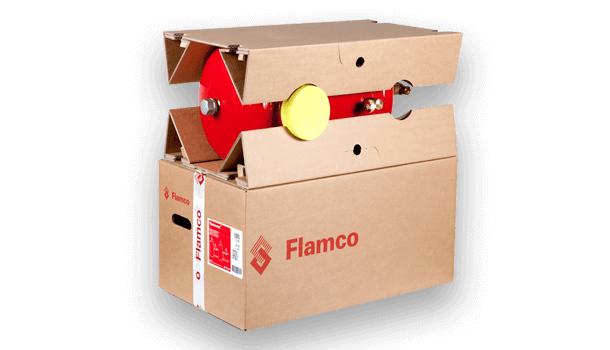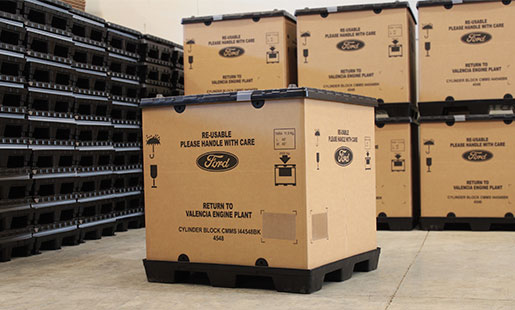Plastic Container Manufacturer Quality: Crafting Solutions for You
Plastic Container Manufacturer Quality: Crafting Solutions for You
Blog Article
Efficient Industrial Recycling Solutions for Lasting Packaging: A Comprehensive Guide
That's where this detailed overview on efficient commercial recycling options for sustainable packaging comes in. By checking out crucial areas such as packaging product selection, making for recyclability, executing recycling facilities, working together with recycling companions, and tracking and determining recycling success, this overview will furnish you with the understanding and tools needed to make informed choices and drive favorable adjustment within your company. Whether you're a packaging professional, sustainability manager, or just interested in the topic, this overview will offer important insights and strategies to aid you browse the world of lasting packaging.
Packaging Material Choice
The option of packaging materials plays a critical role in making sure the sustainability of commercial reusing services. When it pertains to sustainable product packaging, the option of materials is type in reducing ecological effect and making the most of recycling efficiency. Choosing the best products can help in reducing waste generation, save sources, and promote a circular economic climate.
Materials like cardboard, paper, glass, and specific kinds of plastics can be reused numerous times without shedding their high quality. On the other hand, materials that are hard to recycle, such as mixed plastics or non-recyclable composites, can create difficulties for the recycling procedure and may end up in incinerators or landfills.
Another consideration is making use of renewable and eco-friendly materials. Product packaging made from renewable energies, such as plant-based plastics or biopolymers, can help in reducing reliance on fossil fuels and alleviate climate modification. Additionally, naturally degradable materials damage down normally with time, minimizing the build-up of waste in landfills.
Moreover, the weight and volume of packaging products should be minimized to decrease transportation prices and energy intake. Light-weight products not just call for less resources during production but additionally add to decrease carbon exhausts during transportation.
Designing for Recyclability
In order to make sure the recyclability of product packaging products, thoughtful style is necessary. Creating for recyclability entails creating packaging that can be easily sorted, divided, and processed in recycling centers. One important facet of making for recyclability is the option of products. Product packaging developers should prioritize using materials that are extensively approved for reusing and have developed reusing facilities. Materials such as glass, light weight aluminum, and specific sorts of plastic, like family pet and HDPE, are typically recycled and must be chosen over materials that are expensive or challenging to reuse.
An additional important consideration in designing for recyclability is the elimination of unnecessary elements or products. By decreasing the variety of layers, finishes, and extra components, packaging can be made simpler and much easier to reuse. Additionally, designers ought to intend to reduce the use of combined products, as they can complicate the reusing procedure.

Implementing Recycling Framework
Reliable application of recycling infrastructure is vital for the success of industrial recycling remedies. Without proper framework in location, the recycling procedure comes to be ineffective and ineffective, impeding the general objective of lasting packaging.
To carry out reusing infrastructure properly, a number of crucial variables require to article be considered. There ought to be an efficient collection system that facilitates the splitting up and collection of recyclable products. This can include marked reusing bins in public areas, as well as partnerships with waste administration business for curbside pick-up and sorting.
As soon as accumulated, the recyclable materials need to be delivered to recycling centers in a prompt way. This requires reliable logistics and transportation networks, making certain that the materials reach the suitable centers without delay.
At the recycling facilities, progressed sorting and handling modern technologies need to remain in area to separate different types of materials properly. This consists of making use of automated arranging devices, optical scanners, and hand-operated sorting methods.
Furthermore, there need to be a robust market demand for recycled products. This can be achieved with collaborations with suppliers and sectors that utilize recycled products in their manufacturing procedures. Creating a steady market for recycled materials incentivizes the recycling sector and promotes the circular economy.
Collaborating With Recycling Allies

One trick element of collaborating with recycling partners is the facility of clear interaction networks. It is very important to develop open lines of communication to promote the exchange of information, updates, and comments. This permits both parties to stay informed concerning the progress of reusing efforts and address any kind of challenges or issues that may emerge.
Furthermore, cooperation can include joint initiatives in applying and making recycling programs. Reusing partners can supply beneficial understandings and support in developing reliable collection systems and establishing the most appropriate recycling innovations. By functioning with each other, services and recycling companions can optimize the reusing process and decrease waste.
In addition, collaboration can expand beyond the operational facets of reusing. It can likewise incorporate advocacy and education and learning campaigns. By signing up with pressures, organizations and reusing partners can elevate recognition about the importance of reusing and promote the adoption of lasting product packaging techniques amongst customers and other stakeholders.
Monitoring and Measuring Recycling Success
To ensure the performance of commercial recycling link services and the accomplishment of lasting packaging goals, it is important for services and their recycling partners to develop a thorough system for monitoring and gauging reusing success (industrial metal packaging). Determining and tracking reusing success enables services to assess the impact of their reusing initiatives, identify areas for enhancement, and established significant targets for future progression
One way to track recycling success is via using data collection and analysis devices. By gathering data on the amount of product packaging waste generated, the percent of waste that is recycled, and the kinds of materials being reused, companies can gain beneficial insights right into their recycling efficiency. This data can then be assessed to determine fads, patterns, and areas of inadequacy.
One more important aspect of monitoring and measuring recycling success is developing clear and standardized metrics. This allows businesses to compare their efficiency versus industry standards and track their progression with time. Metrics such as recycling rates, waste diversion prices, and greenhouse gas emissions can give a measurable step of a business's recycling success.

Final Thought
Finally, implementing reliable industrial recycling solutions for lasting packaging requires mindful consideration of packaging product choice, making for recyclability, executing reusing infrastructure, collaborating with recycling companions, and monitoring and measuring recycling success. By including these practices, organizations can add to an extra environmentally-friendly and sustainable method to product packaging, reducing waste and advertising the round economic climate.
By discovering crucial areas such as product packaging product choice, designing for recyclability, carrying out reusing facilities, teaming up with recycling partners, and monitoring and gauging recycling success, this guide will furnish you with the expertise and tools required to make enlightened decisions and drive favorable adjustment within your organization. Packaging developers must focus on the use of materials that are commonly accepted for reusing see post and have established recycling frameworks.Cooperation with recycling companions is crucial for the successful application of commercial reusing services and the accomplishment of sustainable product packaging objectives. By joining pressures, businesses and reusing companions can elevate recognition regarding the importance of reusing and promote the fostering of sustainable product packaging methods amongst consumers and various other stakeholders.
By accumulating information on the amount of product packaging waste produced, the percentage of waste that is reused, and the types of products being recycled, companies can acquire useful understandings right into their recycling efficiency.
Report this page